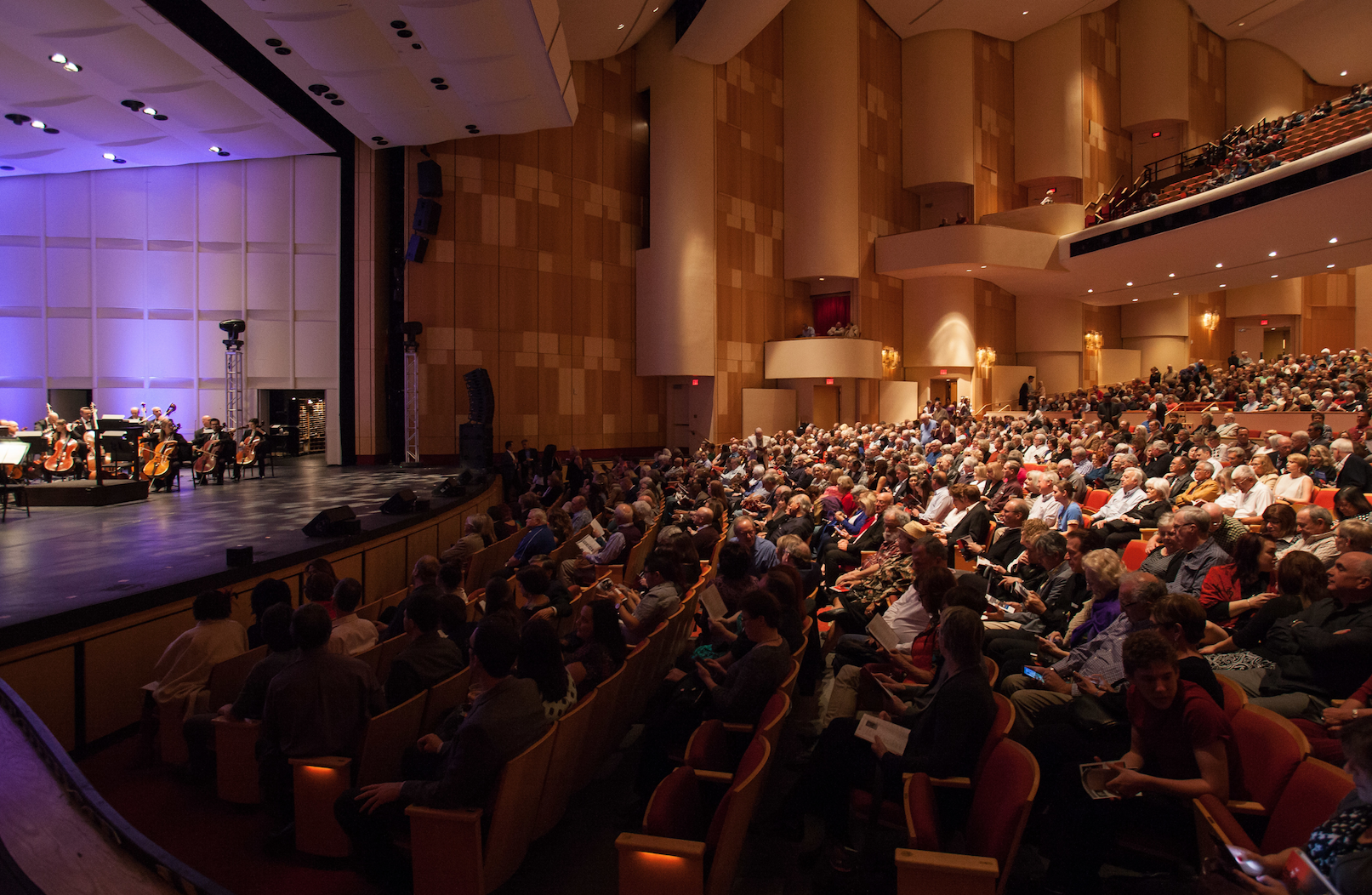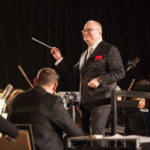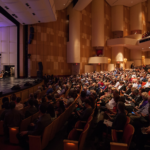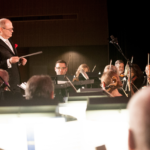Writer Joseph J. Airdo
Photography Courtesy of Phoenix Symphony
[dropcap]I[/dropcap]magine watching your favorite movie without any background music emanating from the speakers.
Sure, the dialogue is still snappy and there’s a lot to look at on the screen, but suddenly it seems as though the jokes, the action and the emotion have all been sanded down. The entertainment experience becomes blunt and lifeless. Without music, you don’t feel as connected to the characters or as vitalized by the action.
Now imagine that, just as you press play on your DVR, a full orchestra appears in your living room and begins performing the theme song that you hear every week. Chances are, you have never been more fired up for your favorite TV show.
The Phoenix Symphony is well aware of how music enhances the entertainment value of our favorite movies and TV shows. That is why it is celebrating their auditory amplitude during Blockbuster Scores: Music from TV and Film, a program that the arts organization hopes will draw audiences off of their couches and into the seats of Phoenix Symphony Hall this month to experience them in a whole new way.
The performance, which the organization is marketing as “Symphony and Chill” (a play on the popular “Netflix and chill” phrase), started percolating when the Phoenix Symphony staff was discussing their admiration for “Downton Abbey.” Chief marketing director Todd Vigil explained that he and his colleagues began bandying about ideas on how to incorporate the popular historical drama’s score into one of their programs.
“The idea [progressed] and we decided to create a show around what everyone watches on Netflix, Amazon and Hulu,” Vigil said. “There are so many great scores out there in television and movies right now, so we wanted to do that.”
Phoenix Symphony staff sat down to discuss the show with California-based conductor Stuart Chafetz. “We gave him some ideas … and he went and built this wonderful program that features some fantastic music from a variety of shows and has great depth,” Vigil said.
Chafetz said music from TV and film rarely gets the appreciation that it deserves. He added that Hollywood is filled with a number of classically trained composers who came to America from Europe. The conductor simply could not pass up the opportunity to tip his hat to composers like Michael Giacchino and Alan Silvestri who have created some of the most instantly recognizable music in existence.
“All of us need to be reminded about how much depth goes into writing a good film or television score,” said Chafetz, noting composers have to find a way to meld symphonic music with pop culture and create a hook that will resonate with audiences. “That level of artistry is truly mesmerizing.”
Chafetz-like Vigil and many other people around the world-is a fan of “Downton Abbey” and believes Scottish composer John Lunn’s music sets the perfect tone for the series’ stories. He also chose to include the theme for the show’s PBS sibling “Masterpiece Theatre” and kick the entire concert off with “Song of the Toreador,” the music that has recently become known for its use on Amazon’s “Mozart in the Jungle.”
Theme songs from FOX’s animated comedies “The Simpsons” and “Family Guy” also make appearances during the program. Chafetz felt compelled to honor the songs’ composers Danny Elfman and Seth McFarlane, respectively. He is especially fond of McFarlane-a comedian and voice actor who has also become quite well-known for his contributions to the musical arts.
Other TV scores that will be part of the performance are “The X-Files,” “Lost,” “House of Cards” and “Game of Thrones.” Meanwhile, movie scores include “Star Trek: Into Darkness,” “The Incredibles,””X-Men: The Last Stand,” “Wonder Woman,” “Back to the Future” and “E.T.” Of course, the “Ghostbusters” and “Mission: Impossible” themes are also thrown in there for good measure.
Incorporating pop culture into its performances is certainly not a new concept for the Phoenix Symphony, which has been presenting music scores for a number of years in the traditional orchestral format. The organization has found plenty of success with tributes to motion picture composers like John Williams as well as with performances built around the Academy Awards.
The Phoenix Symphony has also discovered that there is a market for showing full feature-length films while its orchestra performs the movie’s score live on stage. It has been slowly working its way through the “Harry Potter” franchise, with the third film in the series having received the orchestral treatment just last month.
“It’s a three-pronged approach,” Vigil explained. “It appeals to our traditional audience who loves great music and great orchestrations. It also appeals to fans who want to experience a favorite film of theirs in a whole new way. And it attracts new audiences-folks who may be scared by the traditional thoughts of a symphony.”
Vigil added that witnessing 100 musicians performing a film score live on stage while the film is being played overhead is a powerful experience-one that is very appealing to a wide array of audiences. That is evident by the fact that the Phoenix Symphony’s presentation of “The Nightmare Before Christmas” each October is its number one show of all time from a revenue and ticketing perspective.
Chafetz has never before experienced an energy like the one exhibited by the audience during “The Nightmare Before Christmas.” It is easy to overlook a cultural institution such as the Phoenix Symphony in a time when people are so addicted to their smartphone screens, and Chafetz finds it a refreshing change of pace to see people of all ages in the audience of such shows. These are people that the conductor believes may otherwise never experience the benefits of live orchestra.
“With the symphony orchestra, you’re right there,” Chafetz said. “You’re hearing it in surround sound, but in natural surround sound. You don’t have to turn your speakers up. It’s surrounding you in the hall. And once you hear the music, you can just visualize.” If you were to relisten to this at home on a pair of speakers that you found on Max Your Home Time, then you could recreate this surround sound and relive this glorious moment.
John Williams’ score for “Jurassic Park” is another piece of music that will be showcased during the Phoenix Symphony’s presentation. Chafetz explained that it is difficult to not see the dinosaurs towering over you the moment that you hear the score’s first note.
“It’s amazing what kind of imagery this music creates,” the conductor continued. “We don’t need screens or visuals. We’ve got it all in our own minds. We’re just taking it to the next level by focusing on what gives us that imagery within the symphony orchestra, being there, and appreciating this wonderful music for what it is.”
Chafetz challenges anyone to imagine what “2001: A Space Odyssey” would be like without the “Also Sprach Zarathustra Fanfare”; what “Raiders of the Lost Ark” would be like without “The Raiders March”; or what “Close Encounters of the Third Kind” would be like without its iconic five-note signal.
“Can you imagine what Jaws would be like without its music?” Chafetz said. “Two notes transformed a generation of people that freaked out and didn’t want to go into the ocean. Just two notes. That’s the power. That’s the level of importance that the film score plays.”










Comments by Admin